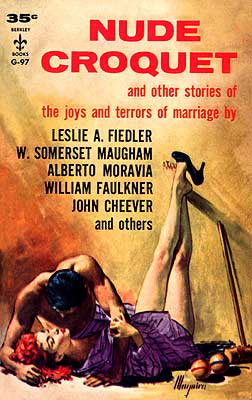
Remember that Mills's grandfather had been Arthur Mills, a moderately powerful Member of Parliament, friend of Gladstone, world traveler, expert on colonization, and son-in-law of Thomas Dyke Acland, 11th Baronet, M.P. for Devon North and Somerset West, and Privy Counsellor.
 George's father had been the Reverend Barton Reginald Vaughan Mills, an Anglican cleric (who was a practicing Catholic) with a checkered career who became a foremost scholar researching, interpreting, translating, and publishing the writings of St. Bernard of Clairvaux.
George's father had been the Reverend Barton Reginald Vaughan Mills, an Anglican cleric (who was a practicing Catholic) with a checkered career who became a foremost scholar researching, interpreting, translating, and publishing the writings of St. Bernard of Clairvaux.Barton had two sons and two daughters, the first son having been born of his first wife, Lady Catherine Mary Valentia Hobart-Hampden, who was granted the rank of Earl's daughter at their wedding.
Barton's elder son, Arthur Frederick Hobart Mills [pictured, right, circa 1925], was born on 12 July 1887 after his mother had returned from Italy after surviving the February earthquake in San Remo, where Barton was apparently working as a chaplain. Lady Catherine would die two years later, an event that must have rocked the worlds of both Barton and young Arthur.
Barton eventually remarried, taking Elizabeth Edith Ramsay, daughter of Sir George Dalhousie Ramsay, C.B., as his second wife. "Edie" would give birth to Agnes Edith (1895), our George Ramsay Acland (1896), and Violet Eleanor Mills (1901).
Barton himself had married well, and his two boys would eventually do the same.
George, who became a schoolmaster masquerading as a graduate of Oxford, took the hand of Vera Louise Beauclerk, a society girl listed among the peerage in The Plantagenet Roll of Royal Blood, in 1925.
His half-brother, Arthur, had also married well, taking Lady Dorothy Rachel Melissa Walpole, elder daughter of our own Robert Horace Walople, 5th Earl of Orford, as his wife in 1916. Marrying Arthur, then an apparently impoverished commissioned officer and war hero in the Duke of Cornwall's Light Infantry, caused Lady Dorothy to become estranged from her father who insisted on a marriage to a more suitable [read: rich] match.
 Lady Dorothy Mills [pictured, left, in 1924], of course, had been born and bred amid the turmoil and seemingly endless repercussions of the scandalous Wiedemann v. Walpole trials, and all of that could not have had any small impact on the entire family, including impressionable Lady Dorothy.
Lady Dorothy Mills [pictured, left, in 1924], of course, had been born and bred amid the turmoil and seemingly endless repercussions of the scandalous Wiedemann v. Walpole trials, and all of that could not have had any small impact on the entire family, including impressionable Lady Dorothy.Nevertheless, the boys had done well for themselves in regard to matrimony, which is likely why we know so much about the family today. Even with such influential wives, the literary works of George and Arthur Hobart Mills have been largely forgotten. Having married into the peerage, however, assured that they had been recorded in the public record for posterity—at least the portions of their lives led within the duration of each man's childless marriage.
George's wife, Vera, died in 1942, after which George, in seriously ill health a year later, faded into almost impenetrable obscurity. He surfaced only as editions of his books from the 1930s were revived in the 1950s, as a summer instructor at the Ladycross School in Seaford, East Sussex, in 1956, and as an on-again, off-again croquet player in amateur tournaments around southern England while residing with his spinster sisters in Budleigh Salterton, Devon, where he passed away in 1972.
His brother, Arthur, was divorced by Lady Dorothy in 1933 after having been discovered engaging in an adulterous affair the previous year.
Arthur Mills did remarry later in 1933, but, like his brother, George, almost completely dropped off the proverbial map except to publish 14 lightly-regarded crime/spy novels. Apparently, Arthur primarily gardened, golfed, and spent time with his new wife, Monica, 17 years his junior, until his death at Winds Cottage, Downton, near Lymington, Hampshire, in 1955. George Mills appears to have never remarried.
The fact that we know so much about the Mills brothers, George and Arthur, is largely attributable to their "high profile" first wives.
 There's still much to be known about Arthur's relationship with his entire family, and especially with his brother George [pictured, right, in 1956], whose 1925 wedding Arthur failed to attend.
There's still much to be known about Arthur's relationship with his entire family, and especially with his brother George [pictured, right, in 1956], whose 1925 wedding Arthur failed to attend.We can glimpse some of what must have been Arthur's life through the eyes of Lady Dorothy, a prolific and extremely private travel writer, who left clues to her relationship with Arthur—a relationship that was certainly coloured by her own relationship with her father, the estranged Earl of Orford—bread-crumbed through her writings.
And so we have been exploring the relatively sordid roots of Lady Dorothy's family history for clues to both her relationship with her husband, Arthur Mills, and his brother, George.
There are still a few more twists and turns in the story of Robert Horace Walpole, the last Earl of Orford and father of our Lady D., and we'll examine them in upcoming posts, as well as linking interestingly ambiguous aspects of her autobiography to her father's life story.
And before I forget, many thanks to everyone who has helped me research the life and career of George Mills, and have a safe, healthy, and happy new year!
















































![Meredith and Co. [1933] by George Mills](https://blogger.googleusercontent.com/img/b/R29vZ2xl/AVvXsEjlUeRNPnH8Xd8JT59QdtabQHRI6DI6Hqew57i6qixjOL3LjgUD9g22o3-wNlmBya36D5-6KZXX-sxLnktAfEqjlvTmdwyiIL2K6VHOGW2Wq9Pe8_oFGknENfVE1Xrkdj0b8FYXTz_6SMg/s1600-r/sm_meredith_1933.JPG)
![King Willow [1938] by George Mills](https://blogger.googleusercontent.com/img/b/R29vZ2xl/AVvXsEgiz_iaQjinIbVw6yQ-W4hwx6wGJwMQH9azCs3Qacp9eX627B7Eq9hMn1wlHLzlkbcflHRWM8VcPX-1uteKbs4LA5q5Oq69WhrnhzBQLjpseK_M34PSoOOhTZ96EfVAGFehG53gZ0M4EvU/s1600-r/sm_1938.JPG)
![Minor and Major [1939] by George Mills](https://blogger.googleusercontent.com/img/b/R29vZ2xl/AVvXsEgH5nj4Q6BNpzVEb1vyJeGV6ikuN4SFAyDa-jypIgbvdrxqcjHkNxqjrXH7ptZmge7oTTpn5QjAI0yCJPdI-fIzooCDD1TAA3RDxO9jzLcU3QOIhBWKiKNz6CPjCSTZgIPd9_4zM7LLpAw/s1600-r/sm_1939.JPG)
![Meredith and Co. [1950] by George Mills](https://blogger.googleusercontent.com/img/b/R29vZ2xl/AVvXsEgm_JPAXPpX0wb8bDkjYG67Sg1HePiPhRP6b9oUMWvkJhiW6XJzmxTQ7TBepfxpPgRrFNCRuumYRj-SAfU9Kw-uDsbO5HBtyxfQfClHVMJxJUkDpbkrCPhzpC4H_g_ctlirgnSla4vX1EQ/s1600-r/sm_1950.JPG)
![Meredith and Co. [1957?] by George Mills](https://blogger.googleusercontent.com/img/b/R29vZ2xl/AVvXsEg0zRm3-CCmA8r2RrBmrACDvmxJjoBjfxUoPI9yc6NWu1BZ3dd89ZvCixmmKZe1ma0QiDIrsDZNqf-8h1egh0JLiRYHagXAqQ1UknWPy6SksK76psYPcEMLGa_Aj7wo2vMFPo0aMdcx_pg/s1600-r/sm_meredith.JPG)












